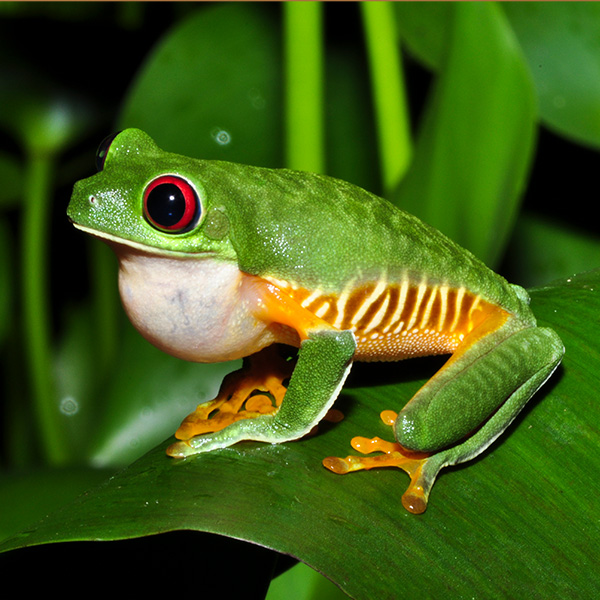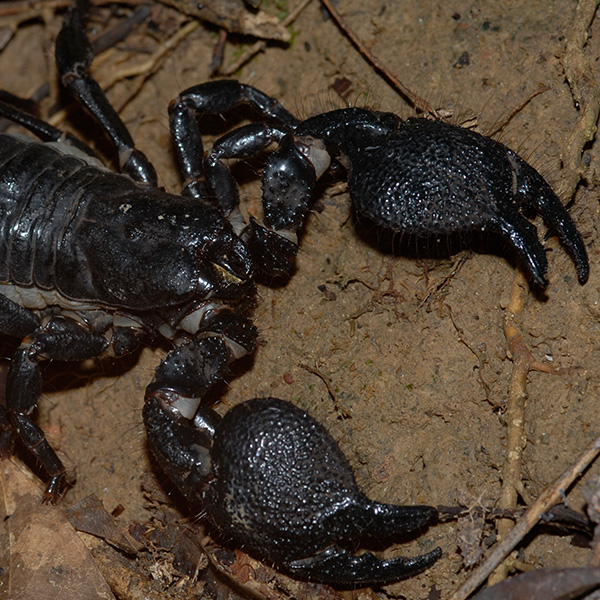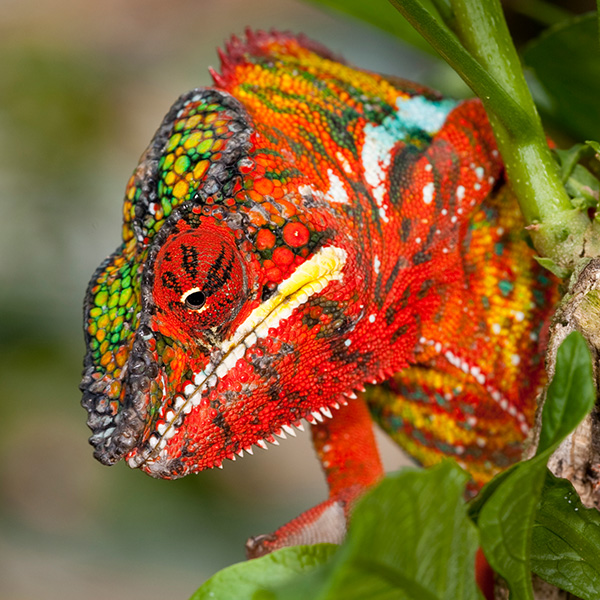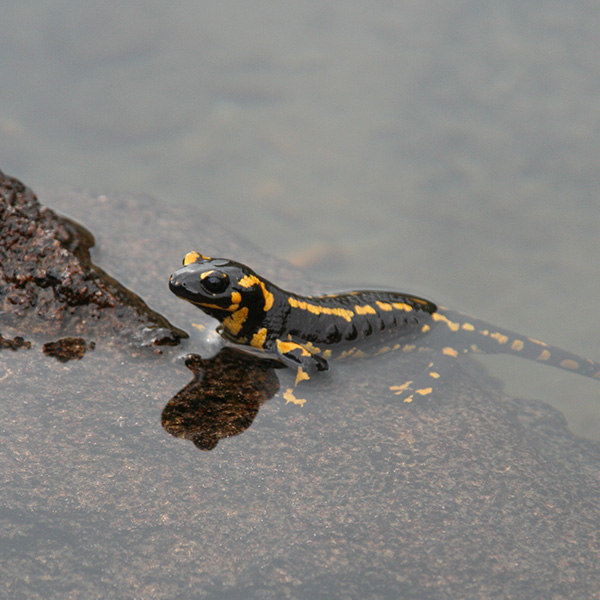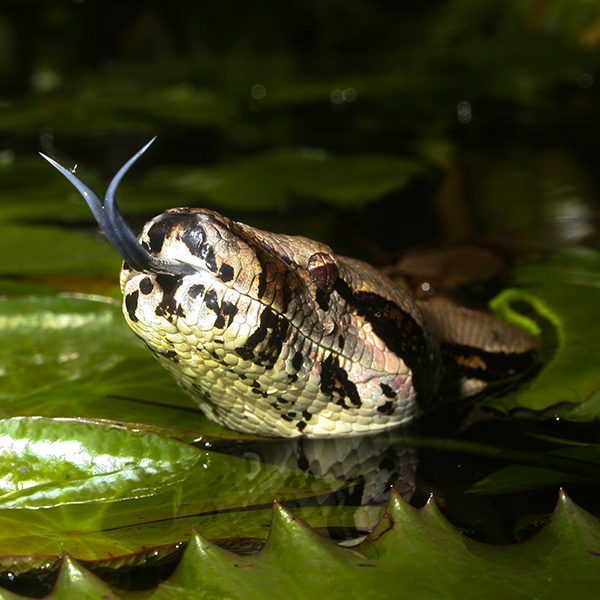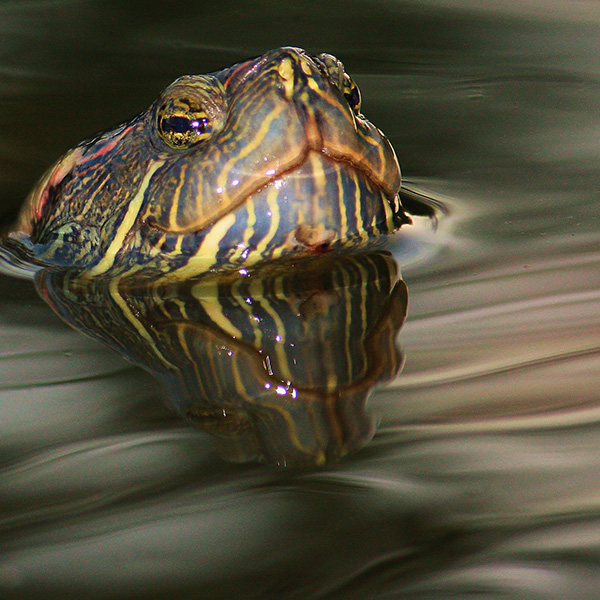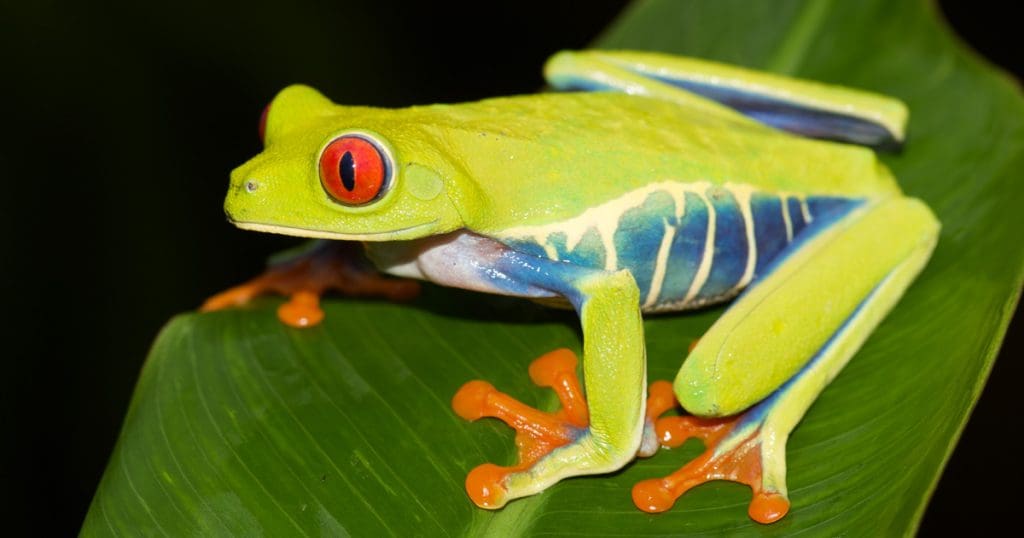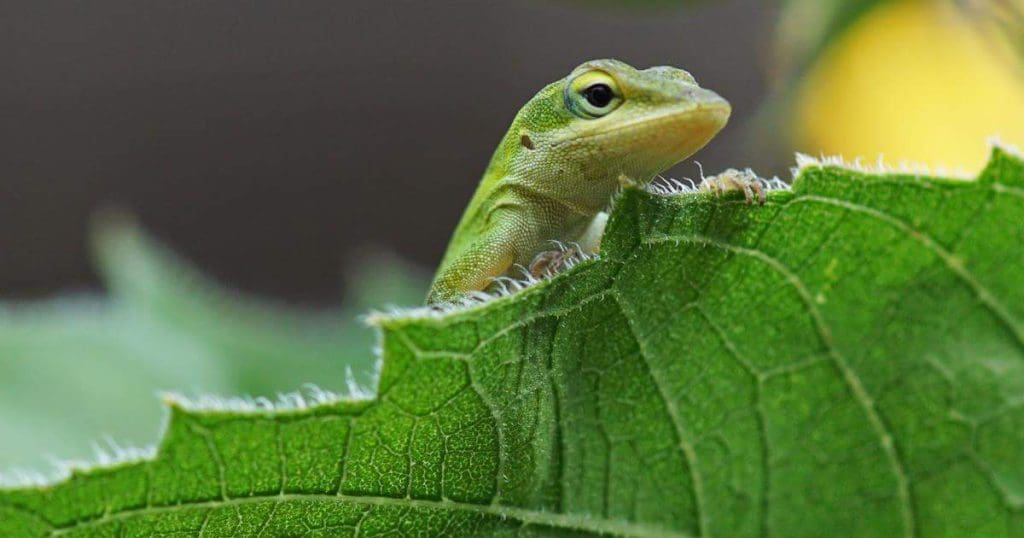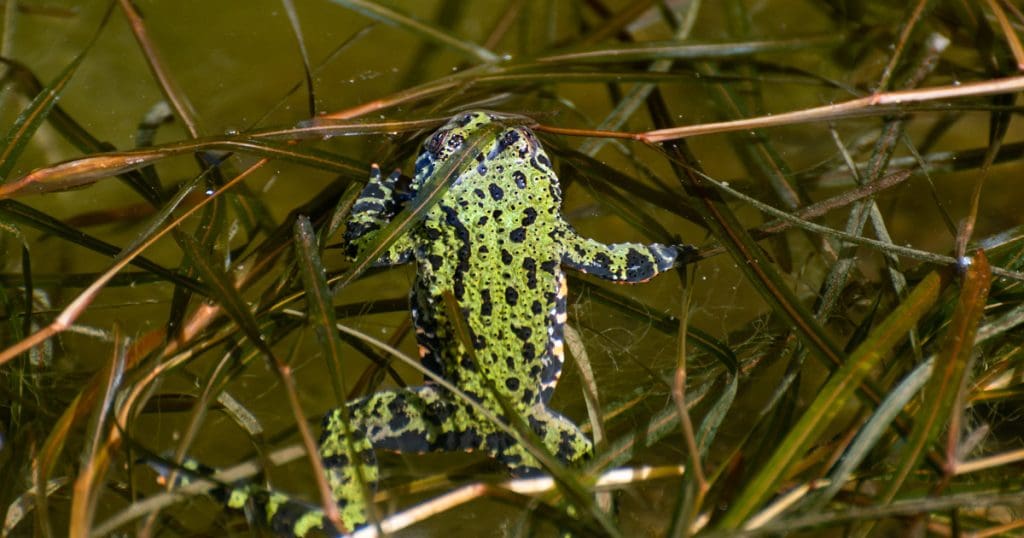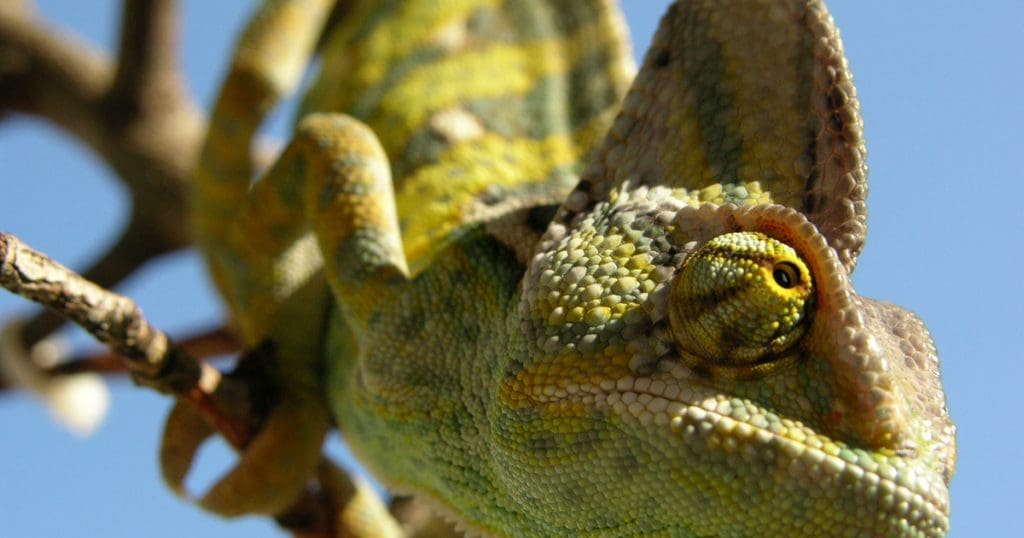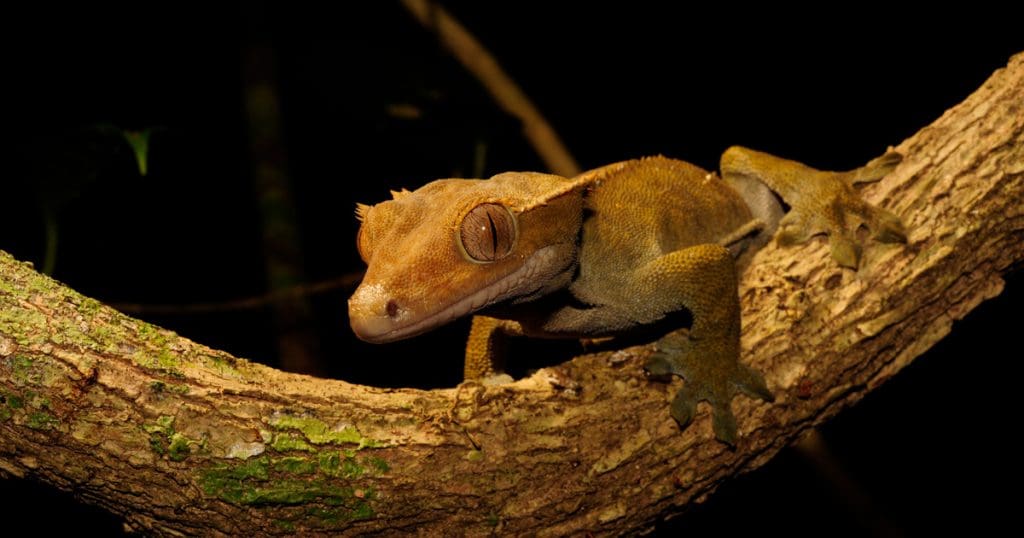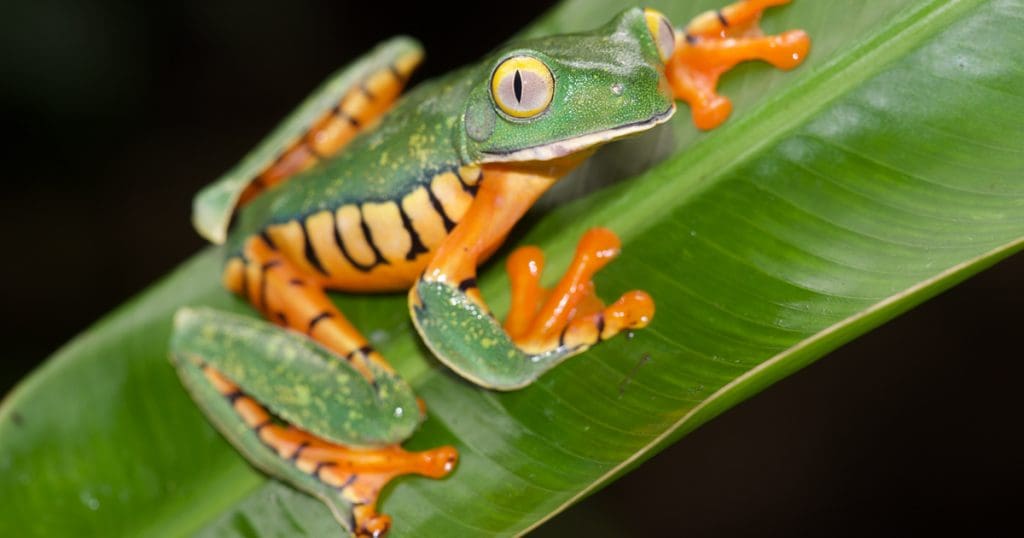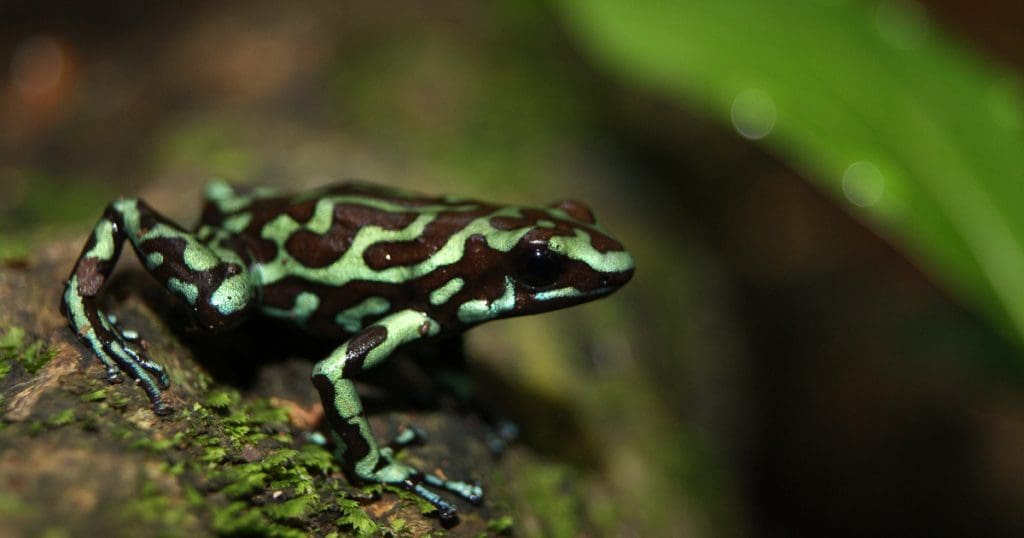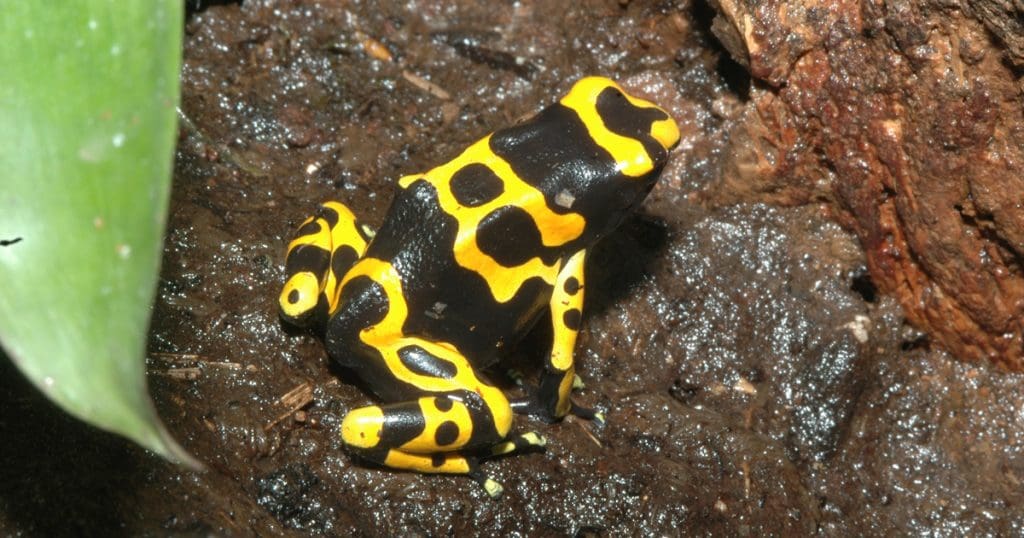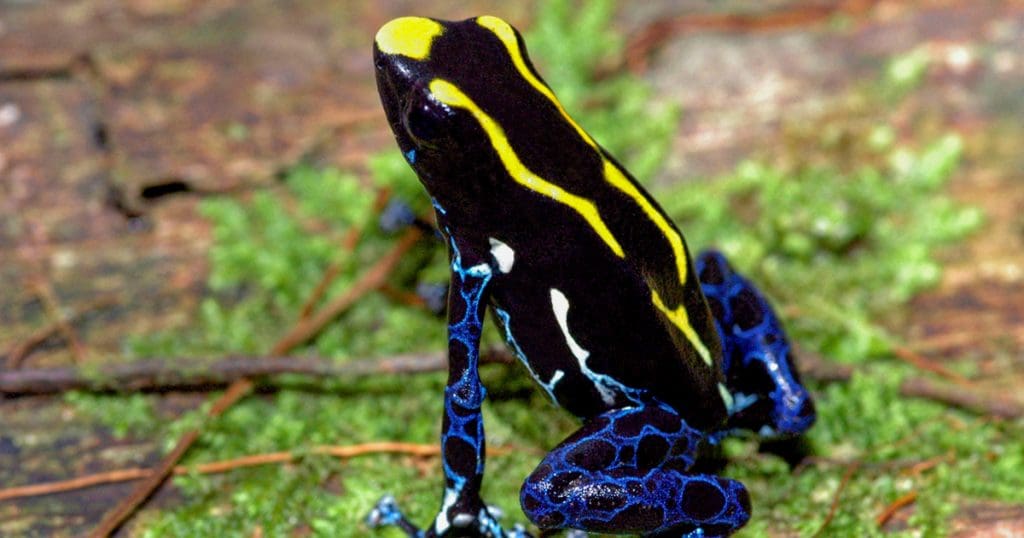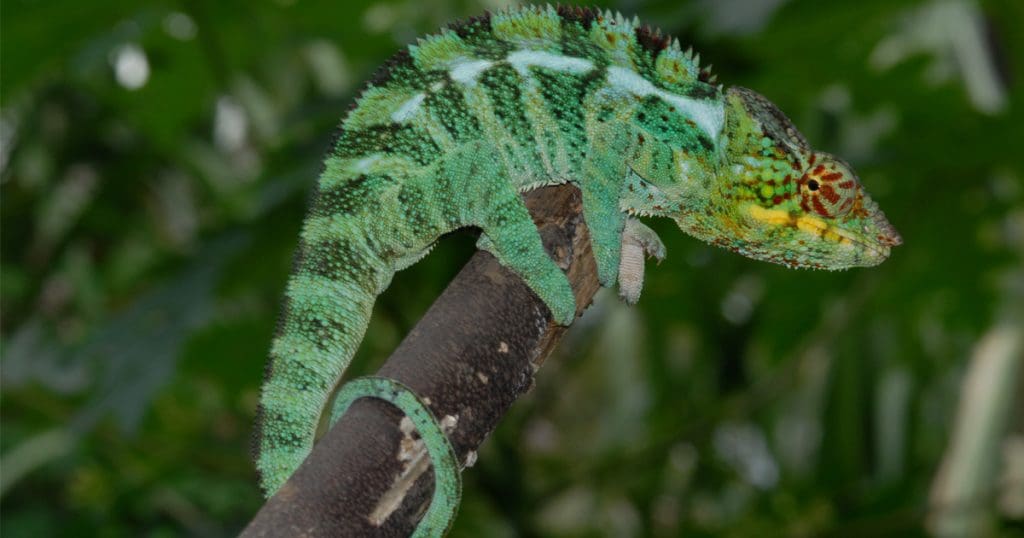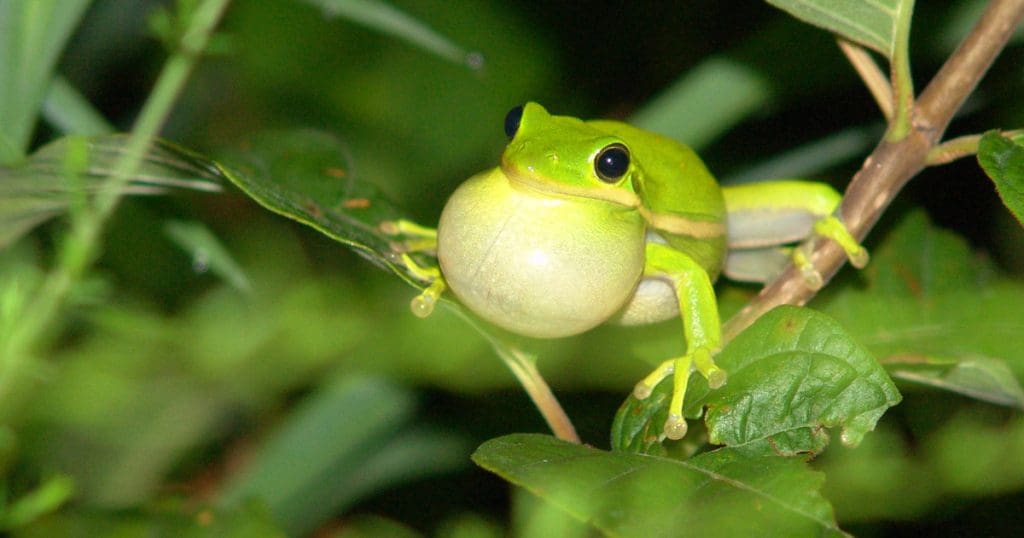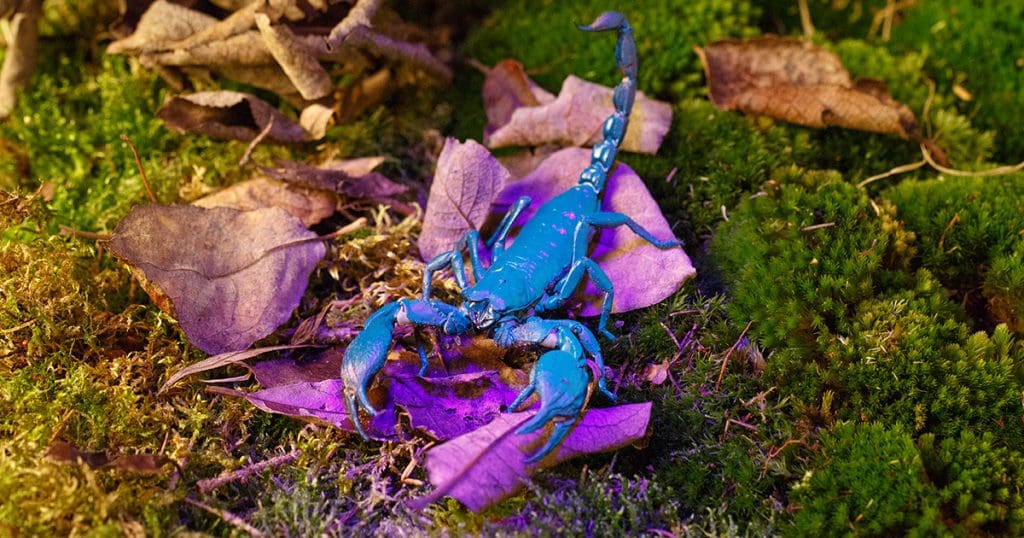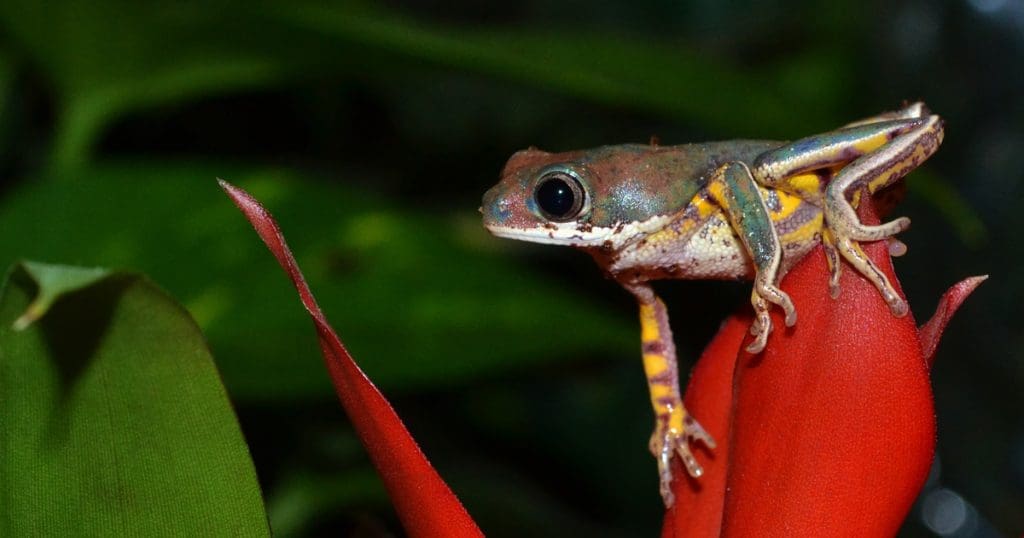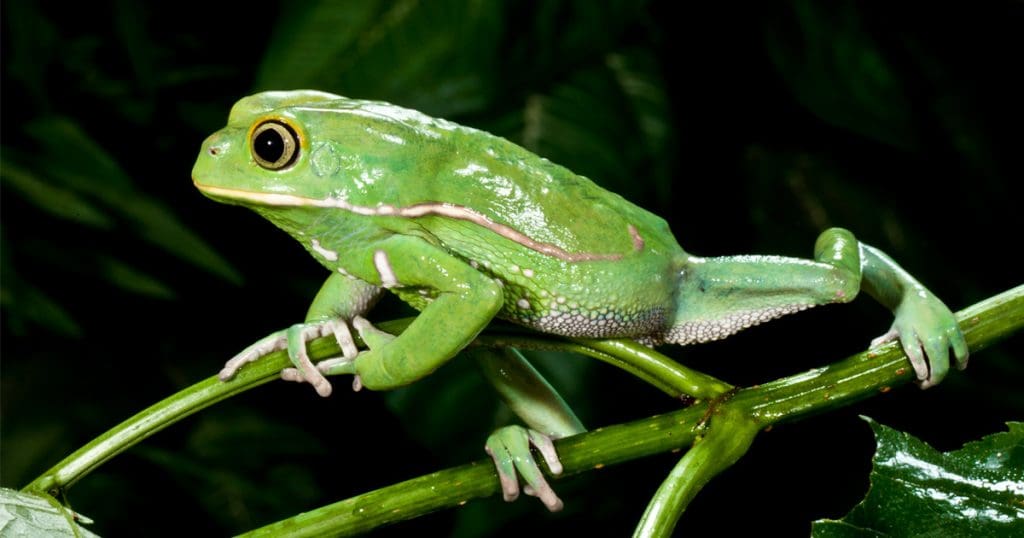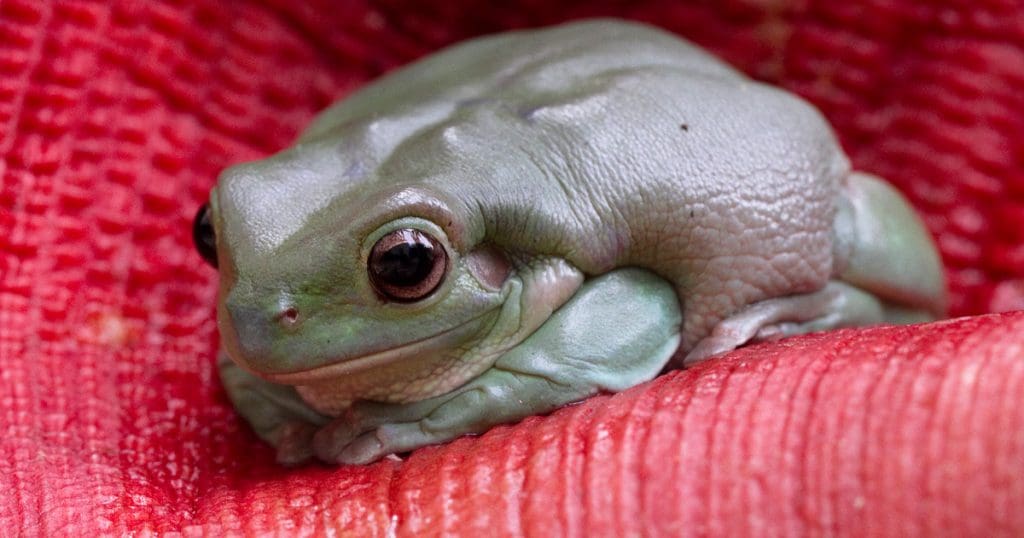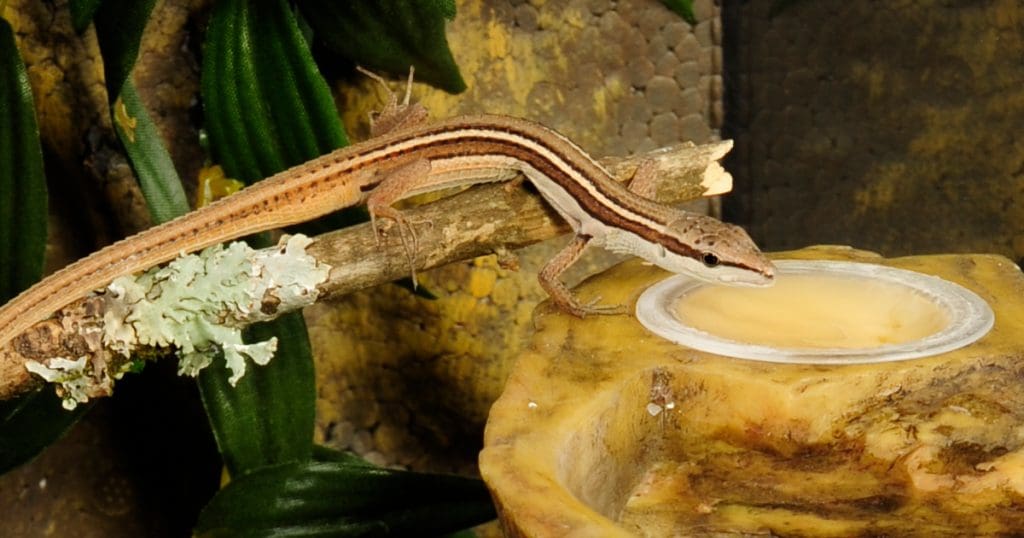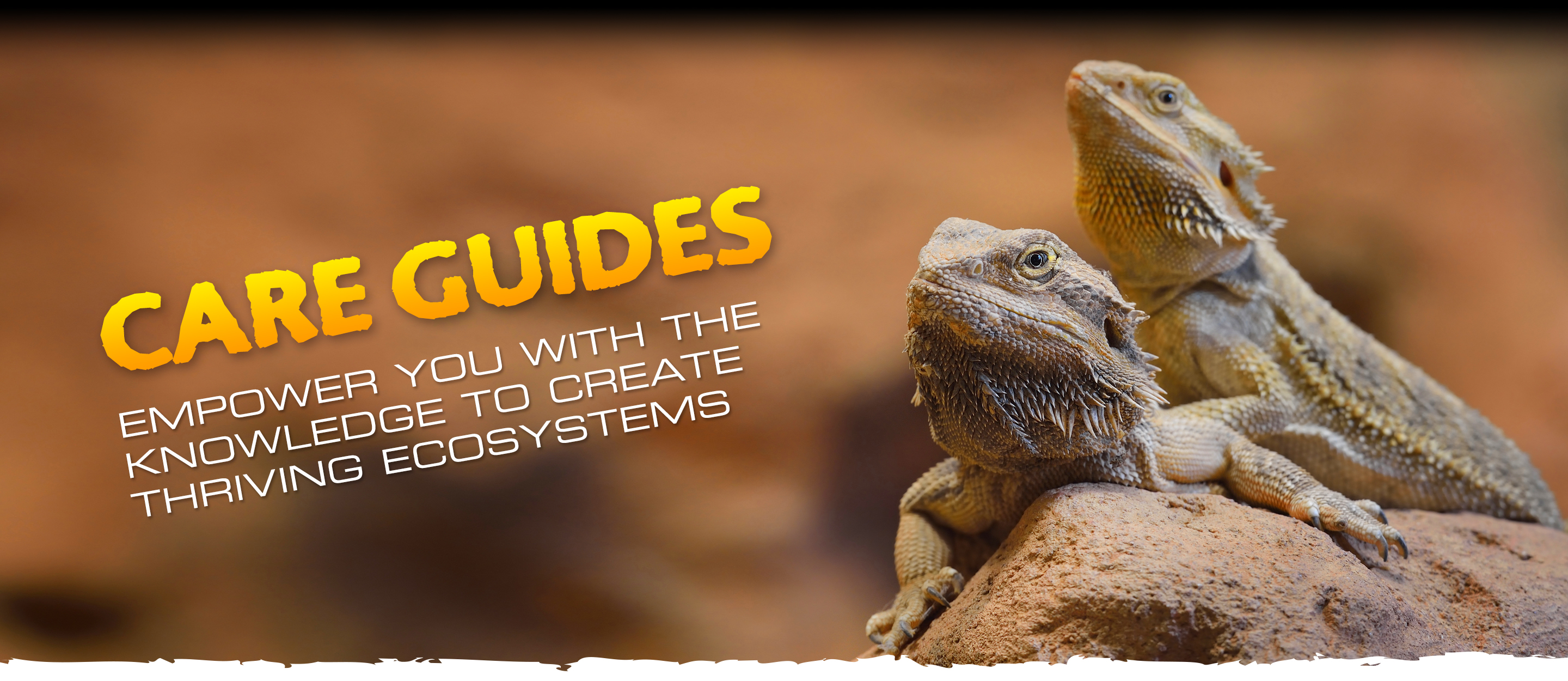
Care Guides
At Exo Terra, we understand that owning a reptile or amphibian is a unique and rewarding experience. However, it’s a distinctive and gratifying journey filled with learning and devotion. The world of herpetoculture is fascinating but complex, and it requires careful attention to fulfill the unique responsibilities that accompany these exotic creatures.
That’s why we have meticulously curated a comprehensive resource tailored to both newcomers and seasoned herpetologists. Our Care Guides serve as a valuable roadmap with information, insights, and expert tips to cultivate and elevate your reptile and amphibian care skills. From selecting the perfect habitat and identifying suitable species to designing optimal living conditions and ensuring well-balanced nutrition, we have everything covered.
Our team of passionate herpetologists and industry professionals have come together, weaving their collective knowledge and experience to offer reliable, current, and precise guidance. At Exo Terra, we don’t just provide instructions; we help you understand the rationale behind every decision, nurturing a holistic approach to care.
With the Exo Terra Care Guides, we reach beyond being merely an informational hub; we envision ourselves as facilitators for your evolution in the captivating domain of herpetoculture. We strive to empower you to meticulously craft thriving ecosystems that resonate with nature’s harmony, where your reptiles and amphibians can flourish and thrive.
“For Exo Terra, you are not merely a pet owner but a conscious caretaker on an enlightening expedition through the world of reptiles and amphibians.”
All care guides
Agalychnis callidryas
Red-Eyed Tree Frogs are native to Mexico, Belize, Guatemala, Honduras, Nicaragua, Costa Rica, Panama and even occur in some isolated populations in Colombia. They primarily prefer tropical rainforests and humid lowland forests but can sometimes be found in humid forests on premontane slopes up to 1250 m above sea level.
The Red-Eyed Tree Frog's common name refers directly to the beautiful, big red eyes that these frogs show at night. Red-Eyed Tree Frogs are sometimes referred to as Red-Eyed Leaf Frogs as well because of their arboreal lifestyle, sleeping on the back of the leaves in the trees and shrubs that they live in.
Red-Eyed Tree Frogs are stunning, long-lived and relatively “easy-to-care-for” amphibians. Their engaging personalities, their huge bright red eyes, bright green dorsal color with blue striped sides, and their bright orange webbed feet, make them one of the most stunning display animals for both the beginning reptile enthusiast as well as for the advanced hobbyist.
Red-Eyed Tree Frogs are a fairly social species and are best enjoyed when kept in small groups of 4 to 8 animals. The interaction between the animals in these small groups increases the viewing pleasure but also stimulates their mating behavior.
Red-Eyed Tree Frogs have been captive bred in the USA and Europe for more than 30 years. They are available in various local color variations and even an "albino type" morph with yellowish dorsal coloration and silver eyes called "lutino" is sometimes offered.
Anolis carolinensis
Green Anoles are native to the Southeastern United States, but have also been introduced to Hawaii, Ogasawara Islands of Japan, Cuba, the Bahamas, and Guam. Green Anoles are diurnal, primarily arboreal, iguanid lizards of the Genus Dactyloidae. Green Anoles mostly inhabit trees and shrubs in tropical & subtropical evergreen forests, but can just as well be found in open grassland with only a few trees, and even in rural and urban areas.
With their changing base color from brown to vivid green, their reddish-pink colored dewlap and their interesting displaying behaviour, these terrarium inhabitants rank among the most popular and easiest to keep beginner reptiles.
Green Anoles are a fairly social species and are best enjoyed when kept in small groups of 1 male with 3 or more females. The interaction between the animals in these small groups increases the viewing pleasure but also stimulates their mating behavior.
Green Anoles have been captive bred in the USA and Europe for more than 30 years. Green Anoles are available as captive bred specimen as well as wild-caught specimen using sustainable ranching and size-selective harvesting.
Bombina orientalis
Fire-Bellied Toads are endemic to Northeastern China, Korea, and the Khabarovsk and Primorye regions in Russia. Despite their common name Fire-Bellied “Toad”, these cute amphibians are actually frogs. As the name already indicates, their bellies are brightly colored in orange, yellow or red. These strikingly colored bellies are actually a warning sign (called aposematic coloration) to inform predators that they are distasteful and should not be eaten.
Fire-Bellied Toads are hardy, long-lived and “easy-to-care-for”. Their semi-aquatic lifestyle, their exposure of belly colors as they float at the water surface, and their somewhat clumsy “amusing” motions make them appealing display animals for both the beginning reptile enthusiast as well as for the advanced hobbyist.
Fire-Bellied Toads are a fairly social species and are best enjoyed when kept in small groups of 4 to 8 animals. The interaction between the animals in these small groups increases the viewing pleasure but also stimulates their natural- and mating behavior.
Ceratophrys ornata
Ornate Horned Frogs are hardy, long-lived, and “easy-to-care-for” amphibians. These large, terrestrial, burrowing frogs are native to South America and are characterized by more or less developed fleshy horns projection above the eyes.
The Ornate Horned Frog is only one of eight species of Horned Frogs:
Ornate Horned Frog (Ceratophrys ornata)
Cranwell’s Horned Frog (Ceratophrys cranwelli)
Suriname Horned Frog (Ceratophrys cornuta)
Brazilian Horned Frog (Ceratophrys aurita)
Caatinga Horned Frog (Ceratophrys joazeirensis)
Venezuelan Horned Frog (Ceratophrys calcarata)
Pacific Horned Frog (Ceratophrys stolzmanni)
Ecuadorian Horned Frog (Ceratophrys testudo)
The Ornate Horned Frog is one of the most commonly kept and bred Ceratophrys species. Horned Frogs are colorful and rather easy to breed which makes these fun frogs an ideal species for both the beginning amphibian enthusiast as well as for the advanced hobbyist. Captive-bred youngsters are readily available and come in a variety of colors & patterns. Next to the more common color morphs like Pattern-less Green, Strawberry, Sunburst, Albino or Chocolate, there are even hybrid morphs available called Fantasy Frogs.
Horned Frogs are commonly called Pac Man Frogs because their rounded shape and huge mouth resemble the animated character in the video game. Just like in the Pac Man game, the Horned Frogs devour everything that crosses their path.
Chamaeleo calyptratus
Veiled Chameleons or Yemen Chameleons are native to Yemen and Saudi Arabia. There are also introduced populations in Hawaii (thought to be eradicated but still persisting), California and SE and SW Florida, USA. They primarily prefer montane subtropical to tropical vegetation in the deep valleys (called wadis), in the Hijaz Mountains in Saudi Arabia and Yemen.
Since Yemen is suffering for over a decade of war and is not an easy country to travel to, or to export animals from, it is amazing how this species was established so well in the hobby. One of the first to study this species in nature, as well as establish the captive husbandry guidelines, was the world-renowned herpetologist Petr Necas. He bred tens of thousands of Veiled Chameleons and introduced these to the hobbyists in Europe and the USA. In the meantime, this species has become not only the most readily available chameleon, but also one of the more popular reptile species in general. Due to selective breeding, there are "bloodline" variations of the Veiled Chameleon available that show more yellow/orange or bluer and there's even a partially leucistic color morph available (called translucent in the USA).
Correlophus ciliatus
Crested Geckos (Correlophus ciliatus) are native to the islands of New Caledonia in the southern Pacific Ocean. These Crested Geckos, or Eyelash geckos, get their common names from the distinctive rows of spikes that run over their eyes and down the sides of their heads.
Thought to be extinct for many years, they were rediscovered in 1994, and several animals were brought to Europe and the United States. Soon thereafter, they proved to be very prolific in terrarium. Due to their beauty, easy manageable size, calm temperament, and ease of care in terrarium, these geckos have become one of the most popular reptiles kept as pets.
“One of the great accomplishments of herpetoculturists,” says Philippe de Vosjoli, “was to establish the New Caledonian Crested Gecko in captivity. Twenty years ago, this species was known by hobbyists only in the form of photographs of preserved museum specimens.”
Cruziohyla sylviae
Sylvia's Tree Frogs are native to Costa Rica, Honduras, Nicaragua and Panama. They prefer primary tropical rainforests located at low to mid elevations, up to 750m above sea level. The type locality of the Sylvia's Tree Frog is Guayacán in the province of Limón, Costa Rica.
The Sylvia's Tree Frog's common name refers to the 3-year-old granddaughter of the Herpetologist Andrew Gray, who described the species in 2018.
Sylvia's Tree Frogs are stunning, long-lived and relatively “easy-to-care-for” amphibians. Their engaging personalities, bright green dorsal color, their orange with black tiger striped flanks, and their bright orange webbed feet and inner thighs, make them one of the most stunning display animals for both the beginning reptile enthusiast as well as for the advanced hobbyist.
Sylvia's Tree Frogs live an arboreal lifestyle, sleeping on the back of the leaves in the trees and shrubs that they live in.
Sylvia's Tree Frogs are a fairly social species and are best enjoyed when kept in small groups of 4 to 8 animals. The interaction between the animals in these small groups increases the viewing pleasure but also stimulates their mating behavior.
Sylvia's Tree Frogs have been captive bred in the USA and Europe for several years now, but were mostly mistakenly named Cruziohyla calcarifer, until Andrew Gray described the species as Cruziohyla sylviae.
Dendrobates auratus
The green-and-black poison dart frog, or Dendrobates auratus, is a captivating amphibian native to southeastern Nicaragua, Costa Rica, Panama, and northwestern Colombia. Recognizable for its long lifespan, the species is also notable for being relatively easy to care for, making it an appealing choice for hobbyists and researchers alike.
Its vivid mint-green base coloration punctuated with black splotches sets it apart visually. However, this species displays a fascinating trait known as color polymorphism. Individuals can exhibit varying shades, with base colors ranging from green to blue, yellow, and even white. The darker splotches, a characteristic signature of the species, vary from bronze to black.
Just like other poison dart frogs, their bright colors serve a crucial evolutionary purpose. They exhibit aposematic coloration, wherein the vibrant hues deter potential predators by signaling the frog's toxic nature, discouraging them from considering the frog as prey.
Primarily terrestrial, green-and-black poison dart frogs are bottom dwellers, spending most of their time navigating through the leaf litter blanketing the forest floor. However, they frequently venture upwards, climbing vines and trees in their tropical habitats.
These frogs are attractive display animals for beginner and advanced amphibian enthusiasts. Their stunning coloration, coupled with their relative ease of care, make them popular choices for terrarium inhabitants. They are best kept as pairs or in groups with most males, as females may exhibit aggressive behavior towards each other when vying for a specific male's attention.
Initially, these creatures may exhibit shy behavior. However, when housed in a well-planted terrarium offering plenty of hiding spots, they quickly become more active, adding a dynamic element to their display. With their intriguing behaviors, rich color variation, and their adaptability, Dendrobates auratus offer a unique glimpse into the vibrant world of amphibians.
Dendrobates leucomelas
Yellow-banded poison dart frogs are endemic to the western Guiana region and the northeastern Amazon basin of South America: southeastern Venezuela and small, adjacent parts of Colombia, Guyana and northern Brazil. They are long-lived, intriguing and “easy-to-care-for”. Because of their typical color combination consisting of a yellow to orange base color with contrasting black splotches and bands, they are also sometimes referred to as "Bumblebee dart frogs".
Like other poison dart frogs, their bright colours are actually a warning sign (called aposematic coloration) to inform predators that they are poisonous and should not be eaten.
Yellow-banded poison dart frogs live a mainly terrestrial lifestyle: they are bottom dwellers that spend most of their time on and in between the leaf litter that covers the forest floor. They do, however, also frequently climb vines and trees.
Their amazing colours and the fact that they are easy to care for make them appealing display animals for both the beginning amphibian enthusiast as well as for the advanced hobbyist. Yellow-banded poison dart frogs are best kept as pairs or groups consisting of a majority of males: females might express dominant and aggressive behaviour towards other females when there is a conflict of interest in a specific male.
Dendrobates tinctorius
Dyeing poison dart frogs are endemic to the eastern part of the Guiana Shield: French Guiana, southeastern Guyana, southwestern Suriname, and a relatively small adjacent part of northern Brazil.
The species is known for its extensive colour and pattern polymorphism, both within and among populations. The frog's pattern is made up of a black base color and a varying combination of bands, splotches and dots in different shades of blue, yellow, white, and even orange. Like other poison dart frogs, their bright colours are actually a warning sign to inform predators that they are poisonous and should not be eaten (aposematic coloration).
Dyeing poison dart frogs live a terrestrial lifestyle: they are bottom dwellers that spend most of their time on and in between the leaf litter that covers the forest floor. They do, however, also frequently climb vines and trees.
Their amazing colours, curious nature, and the fact that they are easy to care for makes them appealing display animals for both the beginning amphibian enthusiast as well as for the advanced hobbyist. Dyeing poison dart frogs are best kept as pairs or trios consisting of two males and one female: females might express dominant and aggressive behaviour towards other females when there is a conflict of interest in a specific male.
Eublepharis macularius
Leopard Geckos are native to Iran, Pakistan, Afghanistan and the North-Western part of India. The Leopard Gecko’s scientific name refers to the fact that these geckos have eyelids, whereas their common name is based on their spotted “leopard-like” color pattern. Young Leopard Geckos show a more banded pattern which over time changes towards a spotted pattern when they become adults.
It is a docile and “easy-to-care” for species that has been captive bred in the USA and Europe for more than 40 years. Their cute smiley faces, their ability to clean their eyes with their tongue and their somewhat clumsy, tail-wiggling movements make them appealing display animals for both the beginning reptile enthusiast as well as for the advanced hobbyist.
Leopard Geckos are a fairly social species and are best enjoyed when kept in small groups of 1 male with up to 5 females. The interaction between the animals in small groups increases the viewing pleasure but also stimulates their natural- and mating behavior.
Leopard Gecko youngsters are readily available and come in a variety of colors & patterns. The list of designer morphs available is extensive and still growing. Where it started with High Yellow, Albino, Striped, Hypo and Hyper, there's now many cool morphs available with appealing names like Godzilla Super Giant, Banana Blizzard, Blazing Blizzard, Enigma, Tangerine, Raptor, Diablo Blanco and many more.
Furcifer pardalis
Panther Chameleons are native to Madagascar, but have also been introduced to Réunion Island somewhere between 1750 and 1836. They were first brought to Réunion by sailors who left them at the landing port of the island during that era, which was in the vicinity of Saint Paul. The Panther Chameleons thrived and over time, they spread to various parts of the Island. There have also been sightings of Furcifer pardalis on Mauritius Island, but these populations are expected to have been introduced quite recently.
They primarily prefer warm and humid lowland coastal forests, rainforest canopies, secondary forests, plantations and hotel or home gardens and planted fences.
Ever since the Panther Chameleon was imported in Europe and the USA, starting around 1980, herpetologists and reptile breeders have worked on enhancing the captive husbandry guidelines continuously. For instance, the use of UVB lighting was a game changer and after a decade or two, the Panther Chameleon became well-established in the hobby.
Due to the hardiness, the gentle character and the striking colors, the Panther Chameleon, rapidly became a popular terrarium animal. The Panther Chameleon is currently available, as captive bred animals, in many geographic color morphs.
There's currently a wide array of captive bred, geographic color forms of the Panther Chameleon available from breeders as well as in stores and on reptile shows. There are also color morphs available that have been selectively bred to increase a certain color or color combination by mixing various natural, geographic color forms. Panther Chameleons have now been captive bred in Europe and the USA for more than 30 years.
Grammostola rosea
The docile temperament of the Chilean Rose Tarantula (Grammostola rosea), combined with its stunning visual appeal, and easy-to-care-for nature, makes it a favorite among those new to tarantula keeping.
Hyla cinerea (Dryophytes cinereus)
American Green Tree Frogs are native to the Southeastern United States roughly from Eastern Virginia to Florida in the East and from Central Texas all the way to the West. There's also records of introduced populations in Puerto Rico and even some invasive American Green Tree Frogs have been noticed in Hawaii.
They can be primarily found around lakes, ponds, swamps, streams and in wetlands. They prefer habitats with floating vegetation, reeds & grasses, and shrubs with branches overgrowing the riparian zone. American Green Tree Frogs easily adapt to various habitats and can be found in urban environments, like garden ponds in private gardens, hotel gardens and industrial complexes.
American Green Tree Frogs are hardy, long-lived and “easy-to-care-for” amphibians. Their engaging personalities, their bright yellow-green back and cream-white lateral stripe running from just under their big golden eyes all the way to their groin, make them appealing display animals for both the beginning reptile enthusiast as well as for the advanced hobbyist.
American Green Tree Frogs are a fairly social species and are best enjoyed when kept in small groups of 4 to 8 animals. The interaction between the animals in these small groups increases the viewing pleasure but also stimulates their mating behavior.
The American Green Tree Frog has been successfully bred in Europe and the USA for decades. American Green Tree Frogs are available as wild-caught specimen as well as captive-bred. We do recommend starting with captive-bred specimen, so you know their age and can rest assured that the youngsters are healthy.
Oophaga pumilio
Strawberry poison dart frogs are endemic to Caribbean rainforests in Central America; from eastern central Nicaragua through Costa Rica to northwestern Panama.
The species is known for its extensive colour and pattern polymorphism, both within and among populations. The frog's look varies from a simple plain colour to a base colour covered with different shapes of dots, splotches and/or stripes, all of this with an endless variety of shades, such as blue, green, red, orange, yellow, black, brown and even white. Like other poison dart frogs, their bright colours are actually a warning sign to inform predators that they are poisonous and should not be eaten (aposematic coloration). Due to their colourful appearance and charismatic nature, they are often the subject of ecotourism related activities.
Strawberry poison dart frogs live a mainly terrestrial lifestyle: they are bottom dwellers that spend most of their time on and in between the leaf litter that covers the forest floor. They do, however, also frequently climb vines and trees.
Their amazing colours, charismatic nature and interesting breeding behaviour makes them appealing display animals. Strawberry poison dart frogs are best kept as pairs: females might express dominant and aggressive behaviour towards other females when there is a conflict of interest in a specific male.
Pandinus imperator
The Emperor Scorpion, scientifically known as Pandinus imperator, is one of the most recognizable arachnids in the world of terrarium invertebrates. Being one of the largest scorpion species, their impressive size and striking appearance have fascinated many arachnid enthusiasts.
Emperor Scorpions are indigenous to the tropical rainforests and savannas of West Africa. Their habitat includes countries such as Ghana, Togo, Benin, Nigeria, Cameroon, and the Ivory Coast. They are usually found in leaf litter and burrows, where they seek shelter from the bright sun and heat of the African day.
While Emperor Scorpions are typically solitary in the wild, some experienced keepers have managed to house them together. However, it's crucial to note that aggression and stress can arise in group settings, so it's recommended to keep them individually.
Phyllomedusa hypochondrialis (Pithecopus hypochondrialis)
Tiger-Legged Monkey Frogs are native to Colombia, Venezuela, Suriname, Guyana & French Guyana, Brazil, Bolivia and Paraguay. They prefer tropical & subtropical dry and moist forests but can also be found in seasonally flooded grasslands. The type locality of the Tiger-Legged Monkey Frog referenced in the original description is Suriname.
The Tiger-Legged Monkey Frog's common name refers directly to the striped tiger markings on the inside of the frog's thighs. These frogs really deserve their common name as being Monkey Tree Frogs. Rather than jumping like other frogs do, they prefer to use their long, skinny legs to slowly walk in the trees in a monkey-like fashion. They're also one of the only frogs with opposable thumbs, allowing them to use their monkey-like "hands" to get a firm grip on the thin branches, while walking through the vegetation that they live on.
Tiger-Legged Monkey Frogs are stunning, long-lived and “easy-to-care-for” amphibians. Their engaging personalities, their bright green dorsal color, their orange with black tiger striped inner thighs and partially orange with irregular black stripes and blotches on the flanks, make them one of the most stunning display animals for both the beginning reptile enthusiast as well as for the advanced hobbyist.
Tiger-Legged Monkey Frogs live an arboreal lifestyle, sleeping on the back of the leaves in the trees and shrubs that they live in.
Tiger-Legged Monkey Frogs are a fairly social species and are best enjoyed when kept in small groups of 4 to 8 animals. The interaction between the animals in these small groups increases the viewing pleasure but also stimulates their mating behavior.
Tiger-Legged Monkey Frogs have been captive bred in the USA and Europe for decades. The somewhat larger cousin of the Tiger-Legged Monkey Frog (Phyllomedusa hypochondrialis), the Super Tiger Leg Monkey Tree Frog (Phyllomedusa tomopterna) is also being captive bred, but to a much lesser extent.
Phyllomedusa sauvagii
Waxy Monkey Tree Frogs are native to the South American rainforests, humid montane forests, and dry forests in the Chacoan region of eastern Bolivia, northern Paraguay, Mato Grosso do Sul of central Brazil, and Northern Argentina. They primarily prefer moist and semi-moist forest habitats but can also cope with drier environments.
They are sometimes referred to as Chacoan Monkey Leaf Frogs as well, because of the Chaco Region they originate from, and because the females lay their eggs on leaves suspended over water, which they then fold to hide the eggs and protect them from drying out.
Waxy Monkey Tree Frogs are hardy, long-lived, docile and “easy-to-care-for” amphibians. Their engaging personalities, their waxy green skin, their adorable smile and big golden eyes make them appealing display animals for both the beginning reptile enthusiast as well as for the advanced hobbyist.
Waxy Monkey Tree Frogs are very tranquil and get accustomed to handling by their caretaker fairly easily. For the well-being of the frogs, however, we do not recommend excessive handling. Waxy Monkey Tree Frogs can be kept individually or in small groups of 2 - 8 animals. The interaction between the animals in these small groups increases the viewing pleasure but also stimulates their mating behavior.
Waxy Monkey Tree Frogs have been captive bred in the USA and Europe for more than 25 years.
Pogona vitticeps
Bearded Dragons are native to Australia. Both the scientific and the common name of the Bearded Dragon refer to the spiny “beard” (or pogon in Ancient Greek) which can be puffed up and darkened in coloration whenever the Bearded Dragon gets excited, stressed or wants to impress and opponent. No need to panic; the spines on the thorny triangular-shaped head and spiny torso of these Dragons may look frightening but are actually very soft when touched.
Their relatively small size and docile nature but especially their love for attention, make these gentle dragons an attractive species for both the beginning reptile enthusiast, advanced hobbyist and even for kids. And moreover, unlike night active creatures, your Bearded Dragon is awake when you are awake.
Bearded Dragons have been captive bred in the USA and Europe for over 30 years. Since Australia already banned the export of native fauna and flora in the 1960’s, all currently available Bearded Dragons are captive bred over generations.
Bearded Dragon youngsters are now readily available in their natural color and pattern, but also in a multitude of color morphs. The list of designer morphs available is extensive and still growing. Where it started with twisting and tweaking the color and pattern, the latest morphs even have a different scalation. There's a lot of cool morphs available with appealing names like Sandfire Red, Sandfire Yellow, Sandfire Pastel, Tangerine, Hypo Melanistic, Witblits, Paradox, Citrus Tiger, Lemon Fire and many more. But, as stated before, not only the colors can be isolated and enhanced by selective breeding, also some specific morphological characteristics, like size or scales can be engineered: German Giants (larger than the average Bearded Dragon), Leatherback (smooth back, no spikes), Silkback (smooth skin), etc.
Ranoidea caerulea (Litoria caerulea)
White’s Tree Frogs are native to Australia, Indonesia and Papua New Guinea. There are also some introduced populations in New Zealand and South Florida, USA. They primarily prefer moist and semi-moist forest habitats but can also cope with drier environments.
They are sometimes referred to as Dumpy Tree Frogs as well because of their somewhat chubby, sleepy appearance.
White's Tree Frogs are hardy, long-lived, docile and “easy-to-care-for” amphibians. Their engaging personalities, bluish-green color and milky white bellies, adorable smile and big golden eyes make them appealing display animals for both the beginning reptile enthusiast as well as for the advanced hobbyist.
White’s Tree Frogs are very tranquil and get accustomed to handling by their caretaker fairly easily. Dumpy Tree Frogs can be kept individually or in small groups of 2 – 8 animals. The interaction between the animals in these small groups increases the viewing pleasure but also stimulates their mating behavior.
White’s Tree Frogs have been captive bred in the USA and Europe for more than 30 years. They are available in various color morphs, green, blue, Snowflake (covered in white spots).
Takydromus sexlineatus
Six-striped Long-tailed lizards, sometimes also referred to as Grass Lizards, are native to the Southeastern Asia region, including countries like India, China, Myanmar, Laos, Thailand, Vietnam, Cambodia, Malaysia and Indonesia. Six-striped Long-tailed Lizards are diurnal, primarily arboreal, lizards of the Genus Takydromus. With their long tail and slender body, the Long-tailed lizards are perfectly adapted to inhabit the tropical & subtropical open forests & grasslands with shrubs, bushes and tall grasses.
With their slender-built and long tails, these gentle, easy-going lizards rank among the most popular and easiest to keep beginner reptiles. It is simply fun to watch the balancing acts these agile and energetic lizards perform while cruising through the terrarium plants and decoration.
Six-striped Long-tailed Lizards are a fairly social species and are best enjoyed when kept in small groups of 1 male with 3 or more females. Although Long-tailed lizard males are not extremely territorial, housing 2 or more males in an enclosure might result in fights and injuries. The interaction between the animals in these small groups increases the viewing pleasure but also stimulates their mating behavior.
Six-striped Long-tailed Lizards have been captive bred in the USA and Europe for more than 20 years. Long-tailed Lizards are available as wild-caught specimen, but are also occasionally available as captive bred youngsters in stores or on reptile shows.
Trachycephalus resinifictrix
Amazon Milk Frogs are native to Colombia, Equador, Peru, Bolivia, Venezuela, Suriname, Guyana & French Guyana and Brazil. They prefer tropical primary rainforests up to an elevation of 450m above sea level. The type locality of the Amazon Milk Frog referenced in the original description is Maracanã River in Pará, Brazil.
The Amazon Milk Frog's common name refers to the milky white secretions that these frogs release when they feel threatened. This behavior, however, is rarely seen in captive Milk Frogs. Trachycephalus resinifictrix is also sometimes referred to as the Mission Golden-eyed Tree Frog because the pupil in their golden iris resembles a black Maltese cross.
Amazon Milk Frogs are adorable, long-lived and “easy-to-care-for” amphibians. Their engaging personalities, the bluish-green color with distinct brown to black pattern, their blueish lips and toe pads and big golden eyes make them appealing display animals for both the beginning reptile enthusiast as well as for the advanced hobbyist.
Amazon Milk Frogs live an arboreal lifestyle, sleeping on the branches or in bark crevices and hollow tree trunks, always in the vicinity of the water filled tree holes they use for their reproductive cycle.
Amazon Milk Frogs are a fairly social species and are best enjoyed when kept in small groups of 4 to 8 animals. The interaction between the animals in these small groups increases the viewing pleasure but also stimulates their mating behavior.
Amazon Milk Frogs have been captive bred in the USA and Europe for more than 20+ years, and captive bred youngsters are readily available in reptile stores as well as from breeders.
Stay up on all things exo terra.
"*" indicates required fields

